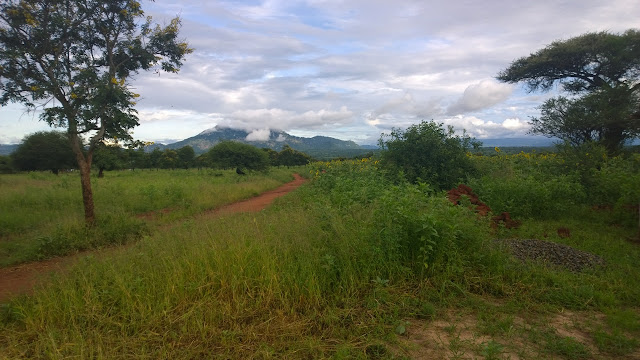Bewilderment, Disbelief, and Dislocation
From 31 March
 |
| The Flag and the Fog - January 2013 |
Easter Morning found me back in the pews of the church in which I was raised, baptized, and confirmed. It was a welcome and comforting place to be; everything - the lilies in front of the altar, the song selection, the faces around me - was so very familiar. It was also a safe and secure place from which I could reflect on the events of the past month that had reshaped the new place I call ‘home’ half a world away.
In the middle of February 2013 the state I live in, Sabah, was invaded by armed followers of the Sultan of Sulu. While the initial incursion raised little more than a few eyebrows, as the weeks passed and little was done to resolve it, the situation began to escalate. By the first week of March, firefights occurred in a handful of towns along the state’s Eastern Coast as the initial conflict turned into a full-fledged security crisis. While detailed analysis of this incredibly complex situation is perhaps best left to journalists and academics, from my own admittedly limited vantage point it was obvious that the rapidly unfolding events were deeply unsettling for my companions, colleagues, and friends.
The depth of this disturbance was made explicitly clear in worship the following Sunday. The service was dripping with the language of threat and of violence; the act of praise was conceptualized as a weapon - both physical and spiritual; God was characterized as “a mighty man of war;” shofars were blown as the congregation joined together, singing “In the Armor of the Lord we’ll enter the Land . . .” as shouts of Alleluia resounded all around. The atmosphere was marked by an electric mixture of defiance and triumph.
In the middle of that fervor I stood alone. My heart sank and my lips could not form the words of those around me. I realized that I was, in fact, dislocated.
I don’t know what it means to have one’s homeland invaded by a ‘foreign’ force - whatever that means in a place with populations as transient and borders as porous as this. Having been raised in a society in which gun violence is accepted as a norm and a nation that has been perpetually at war with one or another for nearly my entire lifetime, I can’t imagine what it must be like to face those specters head-on for the first time.
As an outsider, an observer, and a novice in this land, it wasn’t (and it still isn’t) my place to judge. At best I can seek to understand the response that I saw and I heard. At best I can seek to sympathize with the underlying distress that elicited it. But, still, I must also tend to the misgivings that were (and still are) rumbling around in my own heart and soul.
Worshipping in Waukesha on Easter Sunday was a step in tending to that latter task. With the privilege of distance, time, and the familiar, I’ve been able to look back and (begin to) make sense of my own discomfort and sense of distress as the crisis in Sabah began to unfold. The text was from Luke and the story was of Mary Magdalene, Joanna, Mary the mother of James, and the other women going to Jesus’ tomb and finding that He was not there. As Luke tells it, this is a story of Resurrection - of defiance and triumph - accompanied not by shouts of ‘Alleluia’ and the sounding of majestic trumpets but by repeated phrases of bewilderment and disbelief. That our core narrative of victory, victory over death itself(!), is cloaked not in militaristic garb but in the humbling terms of confusion is, perhaps, telling. . .
As I continue to wrestle with conflict and ways to respond as it breaks out in one’s own land, I am mindful that the tropes of violence and triumphalism are a part of our sacred texts. In fact they are employed, quite regularly, with brutal efficacy and deserve to be tended to by scholars and congregations alike. Like it or not, they are a part of our story. My underlying concern here, however, is that the path to using them is wide and easy while the one that leads to the cross and the type of victory we read about in Luke is decidedly more narrow and difficult to follow. And yet that is the path we are reminded to follow on Easter morning, and every morning.


Comments